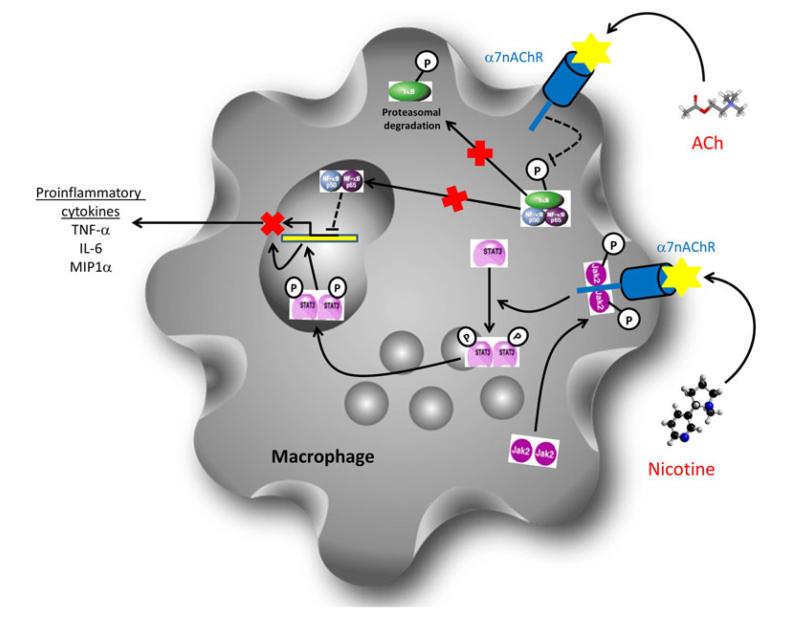Fig. 3.
Diagram demonstrating the two major mechanisms by which activation of the α7nAChR can inhibit expression and release of pro-inflammatory cytokines by macrophages. Activation of the α7nAChR has been demonstrated to inhibit the expression of pro-inflammatory cytokines. Activation of the α7nAChR inhibits the phosphorylation of Inhibitor of Kappa B (IκB) by the Inhibitor of Kappa B kinase (IKK). This in turn inhibits the dissociation of IκB from the active p50/p65 NF-κB complex and prevents translocation of the active NF-κB transcription factor into the nucleus and therefore inhibits expression of pro-inflammatory cytokines. Activation of the α7nAChR has also been shown to lead to the formation of a heterodimeric protein complex with phosphorylated Janus Kinase 2 (Jak2). The active JAK2 then activates the signal transducer and activator of transcription 3 (STAT3). The active STAT3 molecule can then translocate to the nucleus where it acts as a negative regulator of pro-inflammatory cytokine expression

